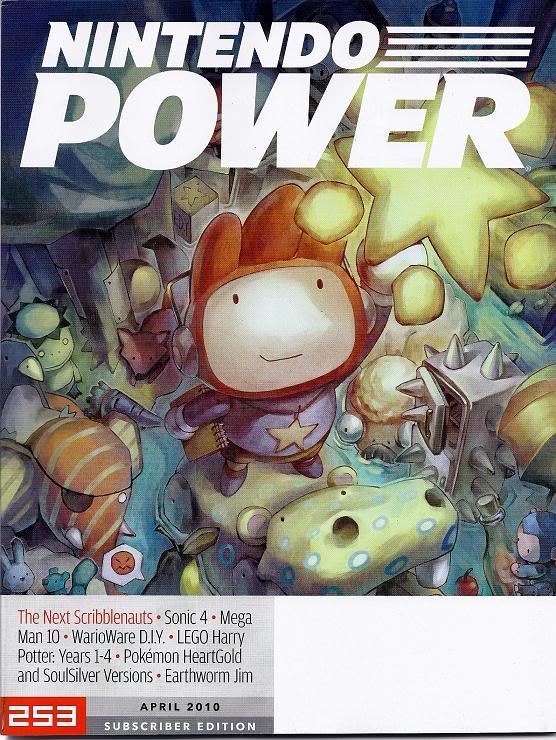 So, this week I reached issue #33 of Nintendo Power in the course of my recaps (part of Nintendo Power’s 4th year), so I decided to take a look at what Nintendo Power has become today, and see how it’s changed over the years.
So, this week I reached issue #33 of Nintendo Power in the course of my recaps (part of Nintendo Power’s 4th year), so I decided to take a look at what Nintendo Power has become today, and see how it’s changed over the years.
For the issues of Nintendo Power I’ve covered thus far, the magazine is, essentially, advertising for Nintendo, but very good advertising. Rather then simply spouting marketing ad copy at the gamers (who were generally children–though the letters column has shown some adults as well), the magazine takes a different tack. Since video games are a visual medium, the magazine is a visual guide. Each featured game gets a strategy guide, often with fairly comprehensive level maps (which were no doubt expensive to make at the time), advice for beating the bosses and information on the power-ups and so on. The idea behind this, ultimately, is that you get a certain degree of familiarity with the game before you get it, and once you’ve gotten it, you have the guide to fall back on in case you get stuck and are frustrated.
Additionally, because there are no other ads in the body of the magazine (though there are occasional ads on the inside cover for other Nintendo Power products or other Nintendo products), you don’t necessarily know that you’re being advertised to. It works incredibly well. When I was a kid, an issue of Nintendo Power sold me on Vice: Project Doom, and kept me sold on it until adulthood, when I finally played it as a ROM.
However, as a minus, the magazine, until very recently (in the Where I Read), didn’t give any true reviews on anything. The scores the magazine gave were mostly useless, as they didn’t explain why the game received those scores. For the last few issues we’ve finally gotten more serious reviews that are willing to say bad things about games, even games that received a guide in the magazine, like Terminator 2.
Modern issues of Nintendo Power are as different from the classic issues as night and day. First, there are ads. All the ads are for games on Nintendo systems and for services like GameFly, but they’re ads. Additionally, there are considerably more reviews here, of games on the WiiWare and DSiWare services and full scale games, and they are more willing to say bad things about games for their systems (particularly on WiiWare and DSiWare). However, as the internet has made it easier to get help for games through sites like GameFAQs, the massive strategy guides of Nintendo Power’s past are gone. Instead, they’ve been replaced with fairly in-depth previews of upcoming titles (but ones that aren’t necessarily very close to release). The magazine has gone from a magazine aimed heavily to kids, to a magazine which is the stalwart bastion of the Hardcore Gamer who is a Nintendo fan. It helps that Nintendo Power has obtained some of it’s independence from Nintendo of America, allowing it to express opinions that are different from the proverbial Party Line.
So, do I think the changes are for the better? Yes. Frankly, most modern games don’t need the same type of strategy guides older games did. Now, I’d prefer some that some of the previews were replaced with post-mortems for games that had already been released, but I’m fine with what we’ve gotten.
I wouldn’t mind if they brought Counselor’s Corner back though.

Pingback: Tweets that mention Nintendo Power Then & Now « Dreams of the Red King. -- Topsy.com